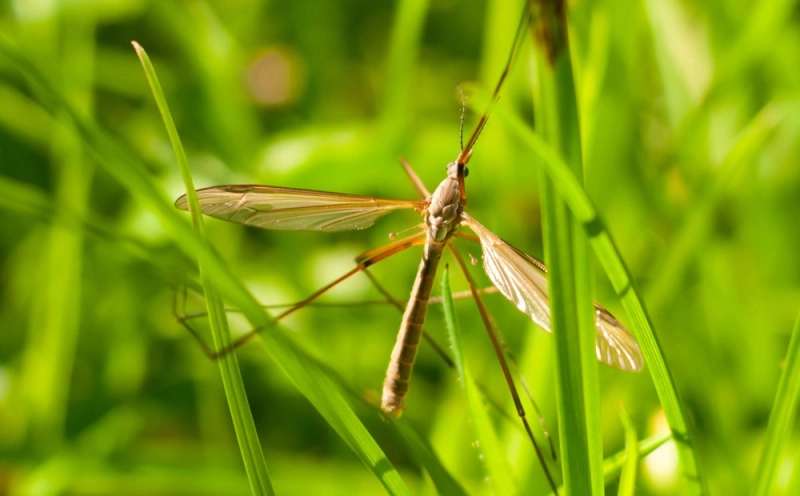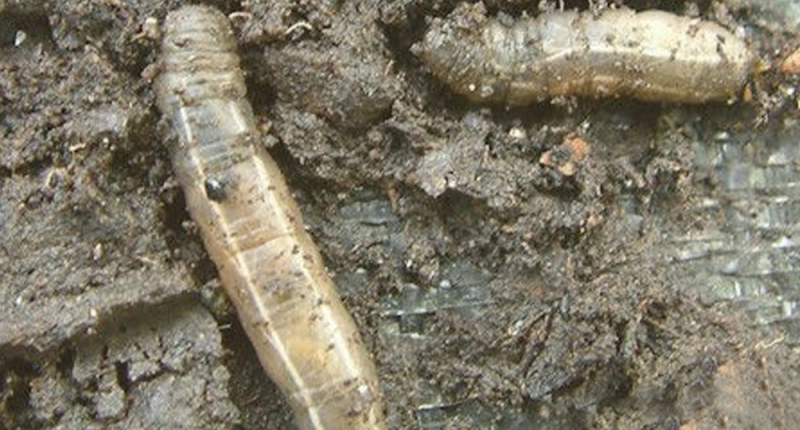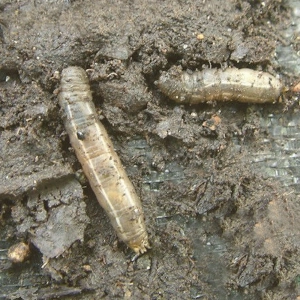The first sign of a Leatherjacket problem is likely to be yellowing and weak grass. In extreme cases, you will be able to pull the affected areas of turf up easily as the roots will be completely eaten.
Secondary damage comes in the form of birds and mammals eating the grubs and pecking holes in the turf/ripping it up completely as they do so. If you notice birds pecking at your lawn, this could be a sign of a leatherjacket infestation.
New grass or turf can be particularly susceptible to leather jacket infestations as the adult craneflies show a preference for fresh new grass – especially grass that is in moist and shady parts of the garden.
This damage can seriously impact the look of your lawn. Take action to rectify this as soon as you notice damage or entire lawns can be destroyed.
About Craneflies
There are more than 350 species of cranefly in the UK, but the ones most likely to be in your garden belong to a group called Tipula, or ‘true craneflies’.

The craneflies lay their eggs just below the surface of the grass. Once they hatch in summer, the leatherjacket grubs will start to feed on the grass roots.
However, sometimes these grubs don’t grow large enough to cause significant damage until the following spring. This is when serious issues can begin.
Leatherjacket grubs have grey/black/brown leathery skin which can make them tricky to spot in the soil. They grow to about one inch in length. They do not have legs or a distinctive head.
How to Control Leatherjackets Without Chemicals
To control leatherjackets without chemicals, choose nematodes. Nematodes are a biological non-chemical treatment and a natural predator of leatherjackets. The species Steinernema feltiae is the correct species to use in the control of leatherjackets.
These nematodes are microscopic worms that actively seek out the leatherjacket grubs, feeding and multiplying inside them, then infecting them with a bacterium.
Once infected, the leatherjackets will stop feeding and die. The nematode will then leave the dead leatherjacket and go on to seek out more, repeating the cycle.
Nematodes are a highly effective, safe treatment that can be used on turf as well as ornamentals. They are safe for pets and other wildlife and the perfect choice for organic gardeners.
They are supplied as an easy-to-mix powder which needs to be diluted with water before use.

How to Apply Biological Leatherjacket Control
Apply to moist soil / turf, when the soil temp is above 12ºC using a watering can or sprayer.
Dissolve the pack contents in a bucket of water to create a stock solution. Then further dilute some of this stock solution in more water in a watering can.
Specific dilution and application rates are shown on our product page and depend on what size pack coverage you select.
Once you have the stock correctly diluted, you simply pour the solution directly onto the affected turf.
Nematodes are harmless to other wildlife, earthworms, bees and birds, and can be used successfully in an organic gardening programme.
This choice of biopesticide will provide long-lasting control of leatherjackets and can be used alongside other biological controls.




